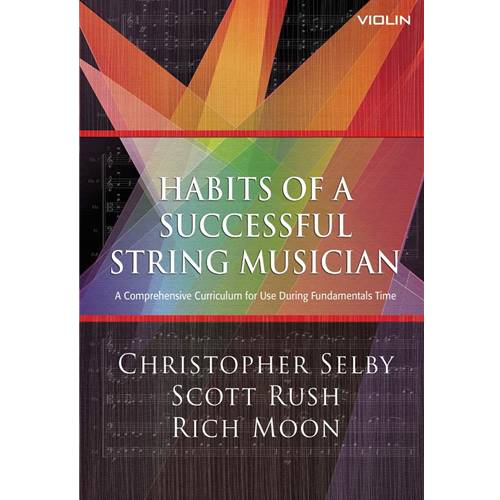Your shopping cart is currently empty.
Habits of a Successful String Musician Violin
Habits of a Successful String Musician Violin
Out of stock
Price:
$9.95
SKU:
ae00-2571
Manufacturer Part #:
G-8624
Features:
Habits of a Successful String Musician: Violin Presents a differentiated, sequential, and comprehensive method for developing skills that lead to the mastery of reading rhythms, and ultimately, to musical sight-reading. Creates a method for teaching scales, arpeggios and thirds that simultaneously accommodates students of different ability levels. Organizes tone, rhythm and articulation patterns into a flexible and sequential series. Creates finger pattern and velocity studies that address the most common problems encountered by intermediate orchestra students. Provides beginning through advanced shifting exercises for students of every level. Creates exercises for learning alternate clefs and higher positions. Provides chorales for the development of intonation, tone quality, blend and musicianship. Presents rhythm charts in a new format that allows transfer from timing and rhythm to pitches in a musical context. Provides audition sight-reading in a classroom “full ensemble” format that is well planned in scope and sequence. There are over 130 sight-reading examples in this book. Promotes the idea that students should cross the threshold from the “technical components of playing” to music making.
Habits of a Successful String Musician: Violin Presents a differentiated, sequential, and comprehensive method for developing skills that lead to the mastery of reading rhythms, and ultimately, to musical sight-reading. Creates a method for teaching scales, arpeggios and thirds that simultaneously accommodates students of different ability levels. Organizes tone, rhythm and articulation patterns into a flexible and sequential series. Creates finger pattern and velocity studies that address the most common problems encountered by intermediate orchestra students. Provides beginning through advanced shifting exercises for students of every level. Creates exercises for learning alternate clefs and higher positions. Provides chorales for the development of intonation, tone quality, blend and musicianship. Presents rhythm charts in a new format that allows transfer from timing and rhythm to pitches in a musical context. Provides audition sight-reading in a classroom “full ensemble” format that is well planned in scope and sequence. There are over 130 sight-reading examples in this book. Promotes the idea that students should cross the threshold from the “technical components of playing” to music making.


